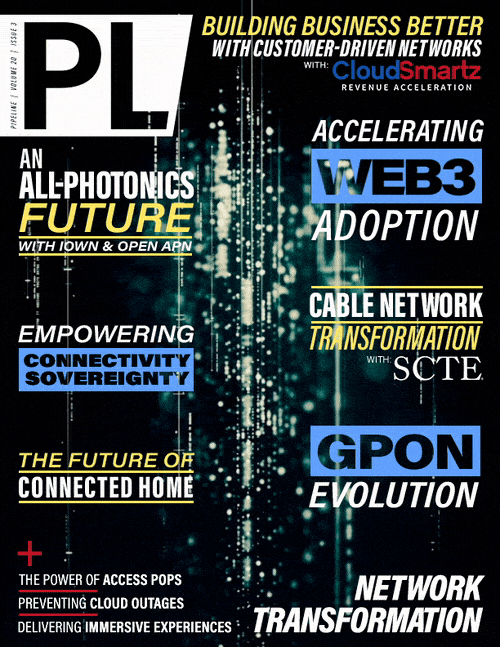Moving Beyond Bandwidth
Lessons Learned from Fiber Deployment
A management system with end-to-end visibility and AI can guide the troubleshooting process...
but I was skeptical. Of course, the errors and outages continued. Lesson to learn: Low-cost in-service optical time-domain reflectometry (OTDR) monitoring systems are now available. Using such a
system would have shown that the optical levels and splices were good and hadn’t changed since installation. That would have saved the time and cost of resplicing the fiber, and been another clue
to look elsewhere.
Lesson 6: AI Can Help
The third technician finally solved the problem. Like the others, he came to the house and checked the ONT and the light levels. He did replace the ONT (again) as this seems to be part of the operator’s standard procedure. But he also applied some logic: If it’s not the ONT and it’s not the fiber, what else could be the problem? The obvious answer is the port at the head end device, or optical line terminal (OLT). He switched the OLT port and the service has been perfect ever since. Note: it’s possible that I may have suggested this to the other technicians.Lesson to learn: Troubleshooting an issue like this is difficult, and experience helps prevent mistakes. Sadly, mistakes are the usual path to experience. But it doesn’t have to be that way. A management system with end-to-end visibility and artificial intelligence (AI) can guide the troubleshooting process, minimizing or eliminating service calls to the home. In my case, there was never a need to visit my house.
Lesson 7: A Good Problem to Have
Assuming that other residents in an area start to adopt fiber services, the next problem is backhaul from the OLT to the network. All those end users streaming videos and having video calls means potential congestion on the uplink from the OLT. This means you must add capacity. How do you provide more bandwidth without pulling more fibers - and incurring more cost?Lesson to learn: Dense wave-division multiplexing (DWDM) is a well-known way to put multiple services across the same fiber. But DWDM has historically been too expensive for many access applications like GPON backhaul. That has now changed, and cost-effective coherent DWDM pluggables are available. They can be retrofitted into an OLT to provide the ability for multiple OLT uplinks and even multiple OLTs to share a single existing fiber. And they work with passive optical multiplexers, so no active equipment is needed.
Lesson 8: GPON is for Business Too
Assuming that we learn all the lessons above, GPON can provide a fast and reliable service with quick service turnup, proactive monitoring, and quick repair times. We can also address growth in bandwidth in an efficient and economical manner. That means GPON is suitable for many business services. But you must provide a business-level service-level agreement (SLA) to win and keep those business customers.Lesson to learn: Be sure you select GPON systems that can support business-level SLAs. Then you can get the most of your GPON investment by offering lucrative and sticky business services.
Lesson 9: What About Wireless Services?
We hear a lot about 5G and its higher speeds. Those higher speeds come with the need for lots of small cells - and that’s an opportunity for fiber-based operators. They can leverage their GPON fiber plant to provide wholesale backhaul services. But there’s a catch. Small cells require synchronization, and that’s not part of most GPON systems.Lesson to learn: There are packet-based synchronization systems that can be added to existing GPON networks. Adding them where needed can open new opportunities for providing backhaul services for 5G networks.
Closing Lesson: GPON is a Start, but not the End
Leveraging GPON deployments is a great way to enable gigabit residential and business services. But we can see from the lessons above that GPON alone is not enough. You must support cost-effective bandwidth with sophisticated management and monitoring systems to ensure a smooth service turnup and quick resolution of any problems. Adding managed Wi-Fi and synchronization capabilities enables additional services. And don’t forget that all that user data has to go somewhere, so efficient backhaul is a must.Learn from the missteps of others and avoid the pitfalls of the “school of hard knocks.” Adopt a holistic approach to your GPON networks and services. Then you can be well-positioned to drive increased revenue by winning and retaining customers with enhanced user experience, reduced downtime, and continued service improvement.



















